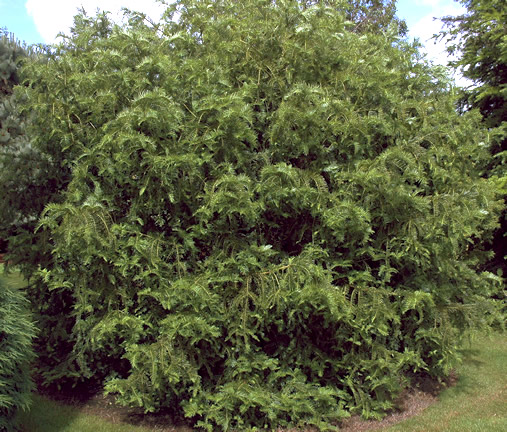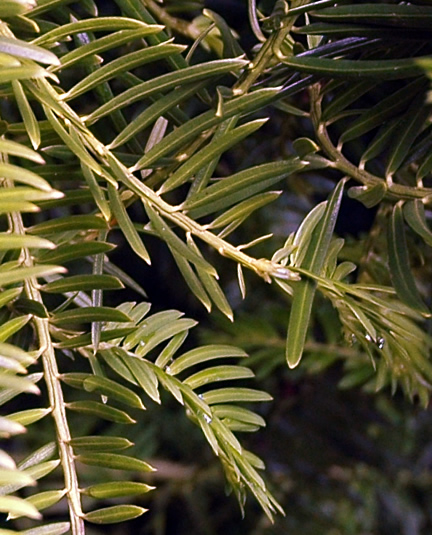
Woody > Cephalotaxus > Cephalotaxus harringtonia > Cephalotaxus harringtonia var. drupacea
Cephalotaxus harringtonia
var. drupacea
Japanese Plum Yew
| Family |
| Cephalotaxaceae |
| Genus |
| Cephalotaxus |
| Species |
| harringtonia |
| Category |
| Woody |
| Variety |
| drupacea |
| Synonyms |
| Formerly listed in the Taxaceae family. |
| Pronunciation |
| USDA Hardiness Zone |
| 6-9 |
| Height |
| 4-8 m |
Photographs
Description and Growing Information
Flowering Period
| Landscape |
| Possibly some specimen use, but typically used in groups and mass plantings. This plant grows slowly and could be used in smaller areas than indicated by its mature size. |
| Cultivation |
| Can be grown in partial shade to full sun. Prefers moist, well-drained soils. Plants show considerable heat and drought tolerance. Manual of Woody Landscape Plants by Michael Dirr recommends it as a substitute plant for yew in southern gardens. Seems to tolerate pruning and shearing. |
| Growth |
| Slow |
| Pests |
| None serious. |
| Habitat |
| Japan and Korea. |
| Bark/Stem Description |
| Gray and exfoliating into strips. |
| Leaf Description |
| Spirally arranged foliage held in two planes that form a distinct v-groove on the upper surface of the branch. Leaves are 2-4.5 cm long, with pointed apex and two gray bands beneath. Leaves may be slightly sickle-shaped. |
| Fruit Description |
| Seed is oval in shape and 1 to 1¼? long and brown at maturity. |
| Propagation |
| Cuttings collected in autumn or spring from the semi-ripe, upward growing wood. Cold stratification outside only produces 33% germination, to reach a 50% germination you would have to plant out in autumn and leave until the following winter period. Many have attempted to germinate in 3 months with a mist system and applying rooting promoters but have found to allow for successful germination you should leave it for 1–2 years. Patience is a virtue when propagating. |

